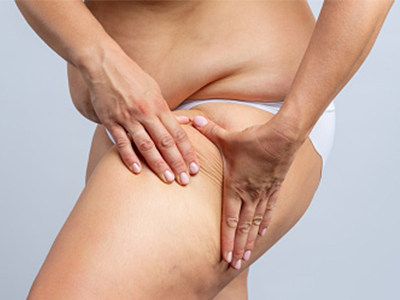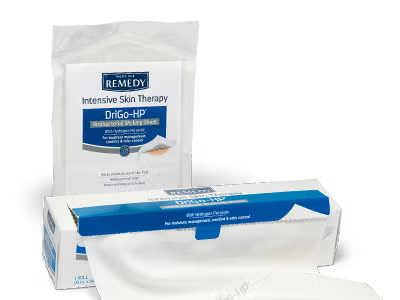Obesity and skinfolds: 4 ways to improve patient care
Discover the tools and approach that help you keep patients safe from ITD


Kristin White, RN, BSN, CWON is an acute care Clinical Education Specialist with Medline Industries, LP
Obesity is the fastest-growing chronic condition in the United States, affecting more than 30 percent of the adult population.¹ For skin and wound health, this means many of your patients may require additional attention.
It’s important to know the right tools, strategies and mindset as you care for bariatric patients’ skin. The following practices are recommended according to the Wound, Ostomy and Continence Nurses Society Core Curriculum on Wound Management.
30%
of adults in the U.S. are obese
1 | Conduct more frequent assessments
The first steps to skin injury prevention for every patient are comprehensive skin and risk assessments. The data and history you gather informs a patient’s targeted prevention and treatment plan. For bariatric patients, the skin assessment should take into account their increased risk for skin breakdown.1
Get more tips on how to perform a thorough skin assessment
Obese patients may have a hard time reaching their skinfolds, so they often face challenges keeping skinfolds clean and dry.
During your skin assessments, pay close attention to these at-risk areas:

- Underneath pannus and breasts (for both genders)
- Perineal and gluteal folds
- Lumbar and mid-back areas
- Posterior neck
2 | Standardize skin health protocols
Skinfolds can get irritated from over-hydration of the skin due to a combination of trapped moisture and friction between opposing skin surfaces, which can lead to intertriginous dermatitis (ITD). To protect against skin damage, be sure to cleanse fragile patient skinfolds frequently with a gentle, pH-balanced cleanser and dry thoroughly. This practice will help reduce bacterial and fungal growth that can contribute to further breakdown if left untreated.
Discover how to fight moisture-associated skin damage
A product such as DriGo-HP Antibacterial Wicking Sheet can be applied to skinfolds to help manage moisture and minimize skin-on-skin friction, which can potentially reduce the likelihood of ITD between skinfolds. You can change these dressings often to help prevent skin damage and control odor.
If you notice any sign of a fungal rash developing, an antifungal powder should be applied to the area, along with the wicking or absorptive product. Unlike some products, DriGo-HP can be used with antifungal powders and creams.
Before patients leave your care, be sure to educate them and family members on how to care for their skinfolds at home. For instance, remind them that they should not substitute a proper wicking sheet with gauze pads, paper towels, coffee filters or linen to manage moisture.
3 | Remember to lift safely
In order to best examine skin under larger skinfolds such as the pannus, use a lifting device that helps keep the patient comfortable, decreases friction on their skin and protects you from injury. Such lifting equipment is also helpful when it’s necessary to reposition a bariatric patient for pressure relief.

4 | Maintain patient dignity during skinfold care
Obese patients may have experienced discrimination or embarrassment during previous health facility visits. As wound care nurses, you can model best practices for staff nurses through your actions and choice of words. When you do the right thing, it empowers your staff to do the same.
How to demonstrate empathy, respect and sensitivity with bariatric patients:
- Be careful how you react to their bodies.
- Explain the skin assessment process to the patient before you start.
- Ask patients their preference on factors such as having other people in the room during dressing changes.
- While bathing patients, keep the door closed and only uncover each body part as you’re assessing it, keeping others covered.
Gentle and thoughtful actions can make all the difference to a patient, how they perceive you and how well they comply with skinfold care instructions at home.
Key takeaway
With an increasing number of bariatric patients, it’s important to understand their unique skin health challenges. Problems due to moisture and friction in skinfolds, including the potential for ITD, is one of them. The right tools and a respectful approach will help you keep patients comfortable, prevent further skin breakdown and demonstrate best practices to other staff caregivers.
Reference:
- https://www.ncbi.nlm.nih.gov/pmc/articles/PMC2892378/?report=classic (Accessed April 21, 2020)
Source:
Wound, Ostomy and Continence Nurses Society Core Curriculum: Wound Management, 1st Edition, 2016 by Doughty D. and McNichol L.
